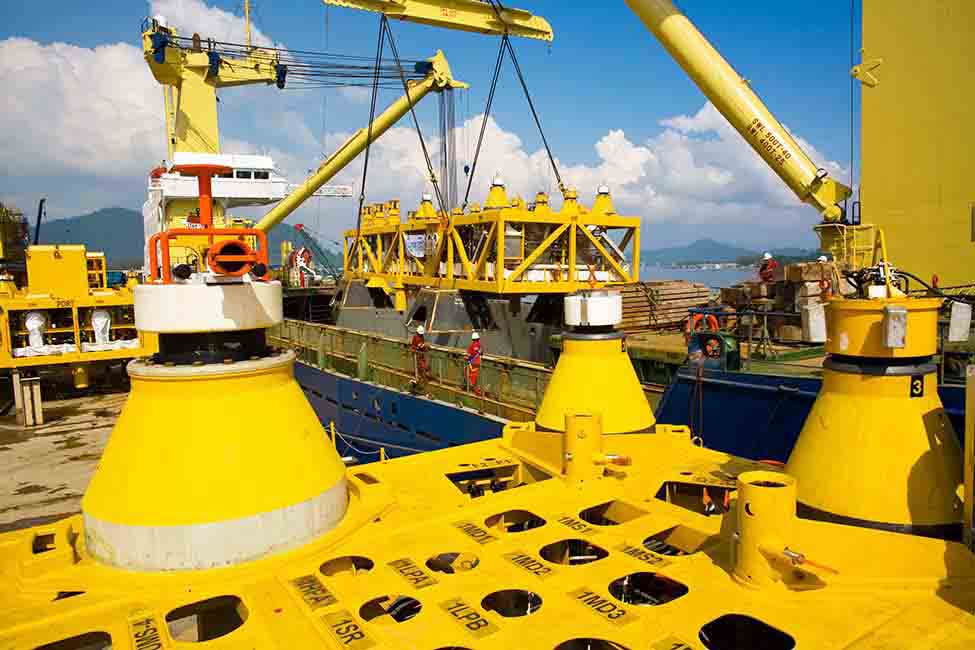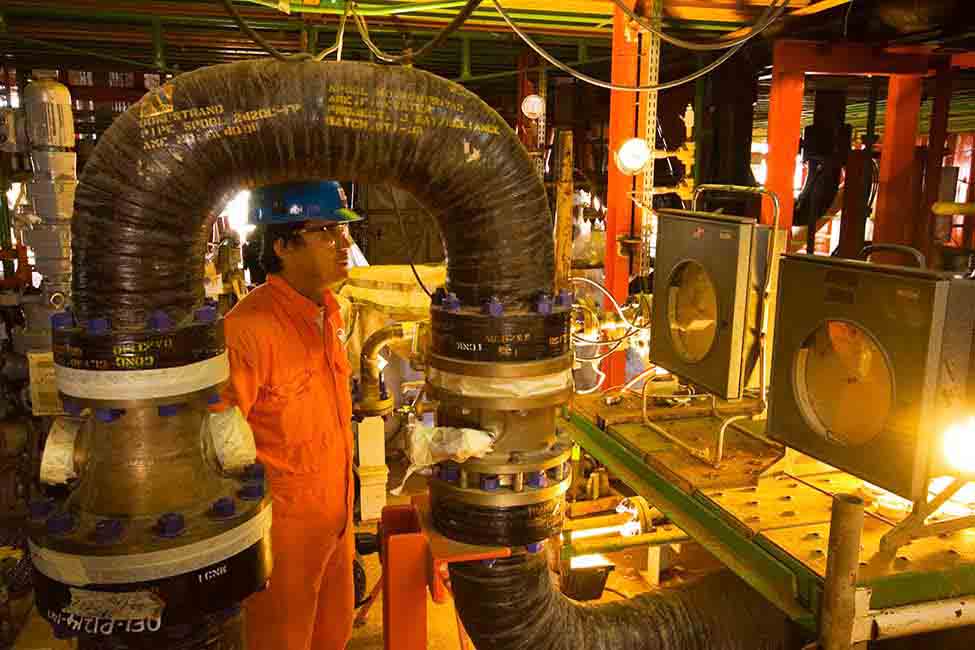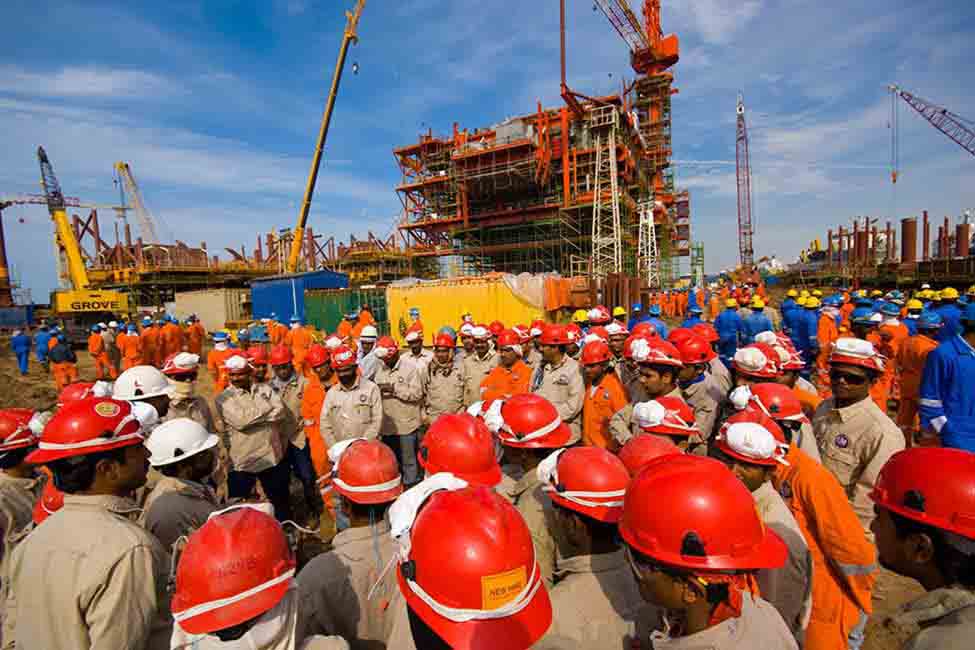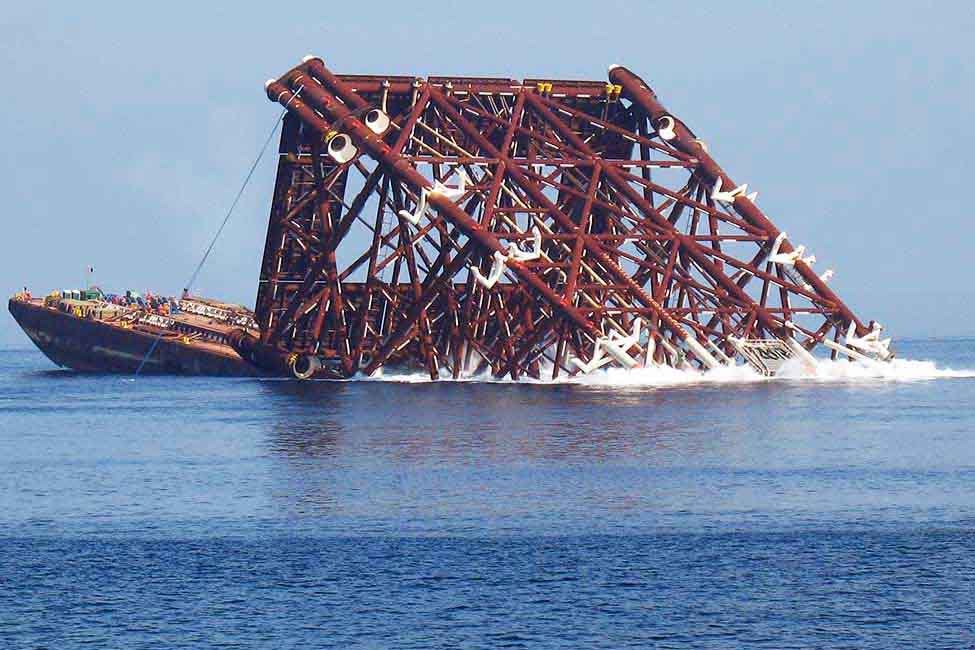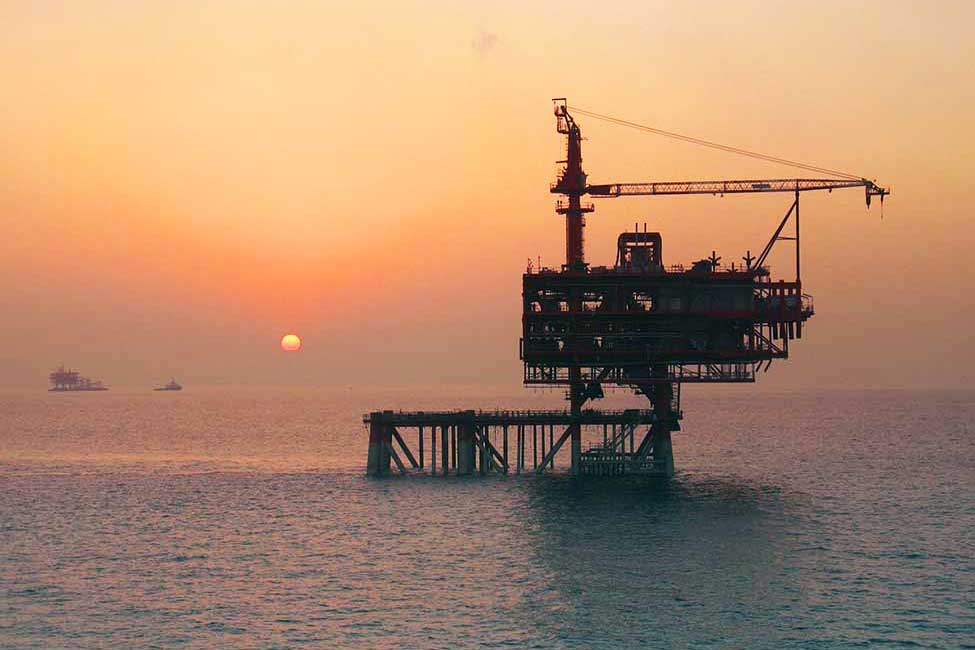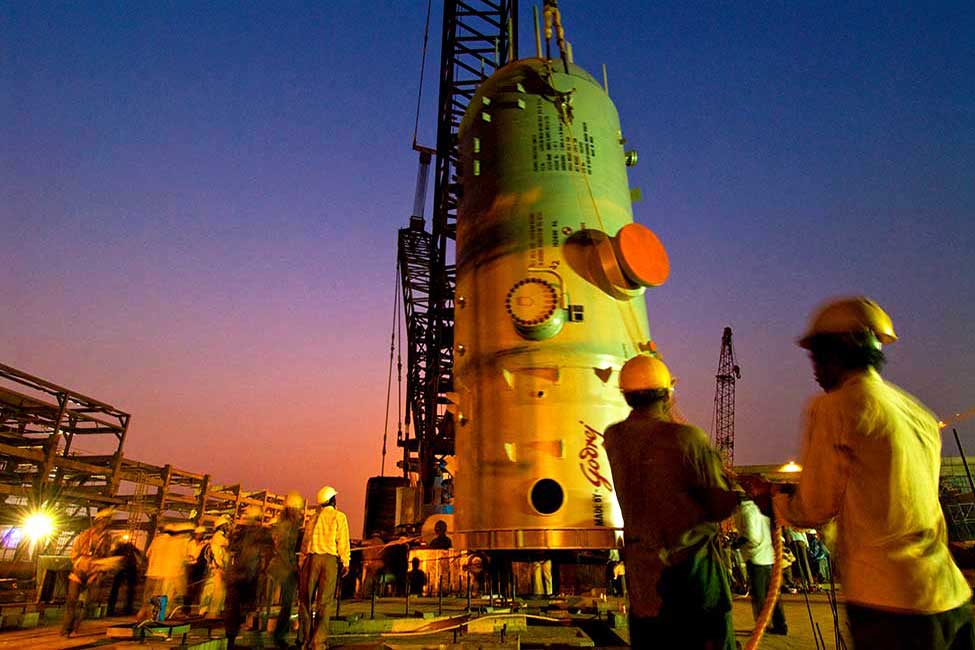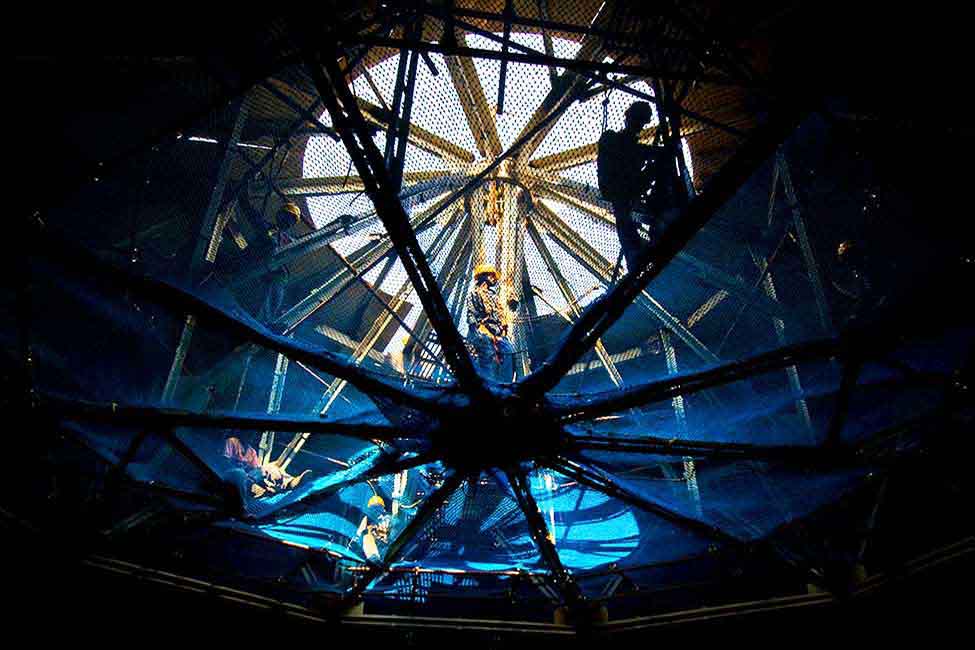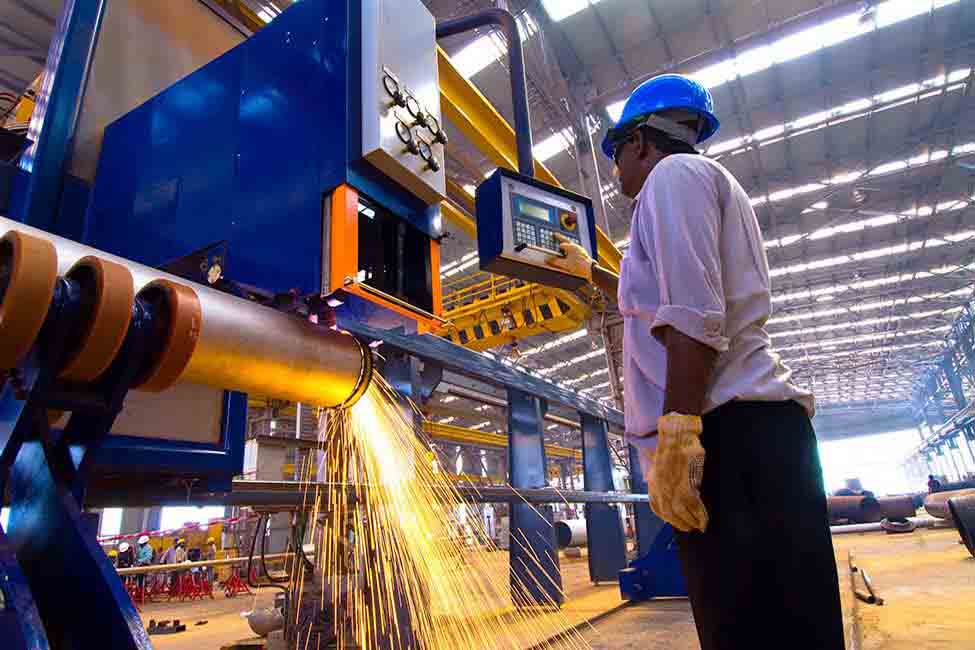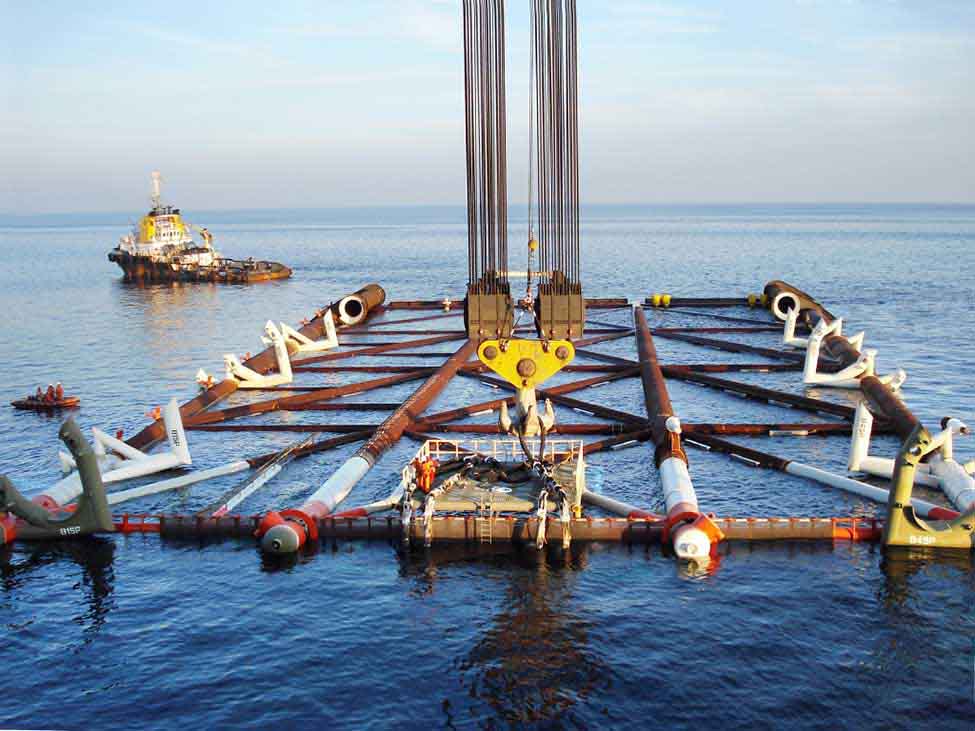Krishna Godavari Dhirubhai 6 (KG-D6) was Reliance’s first offshore gas field development and its first underwater discovery. It was also India's largest deposit of natural gas and the largest such discovery in the world in 2002.
The project takes its name from India's Krishna-Godavari Basin, which covers more than 19,000 square miles (50,000 square kilometers) in Andhra Pradesh and production block D6 in the Bay of Bengal. In turn, the K-G Basin's name derives from its components: the Krishna River and Godavari River Basins.
KG-D6 Natural Gas Development
Image Gallery
Contributions from around the world
- Engineering took place in Australia, England, India, the Netherlands, Norway, Scotland, and the United States.
- The steel platform jacket was built in Louisiana, decks and piles in Dubai.
- Manufacturers produced major subsea components at facilities in Norway, Scotland, Malaysia, and Thailand.
- Mills in Japan and parts of Europe rolled the steel line pipe.
Inside the project
The size of KG-DG’s reserves, well pressure, and overall complexity made this one of world’s toughest hydrocarbons projects. Bechtel managed engineering, procurement, installation, and commissioning. KG-D6's initial capacity of 2.8 billion cubic feet of natural gas per day essentially doubled India’s output.
The KG-D6 natural gas project entailed:
- Installing subsea equipment
- Laying pipelines
- Building and placing a riser platform
- Constructing an onshore terminal
The project included routing seven pipelines up the Nilarevu River and erecting a large onshore gas terminal about 19 miles (some 30 kilometers) south of Kakinada to receive the natural gas from the offshore system, dehydrate it, compress it, and feed it into an onshore pipeline to Mumbai.
KG-D6 called for 22 subsea wells in the Bay of Bengal at depths of up to some 4,000 feet (more than 1,200 meters). That far below the surface, pressure runs well over a hundred times atmospheric pressure up top. And temperatures come close to freezing. It's no surprise that robots handle construction and maintenance.
Giant reels—like small Ferris wheels—spooled out 53 miles (85 kilometers) of electrohydraulic umbilicals and 37 miles (60 kilometers) of subsea power and signal umbilicals. As the name suggestions, these lines supply the subsea system with “nutrients”: electrical power, communications and control signals, chemicals, and hydraulic fluid. A single semiflexible sheath contains the bundle of umbilical lines.


